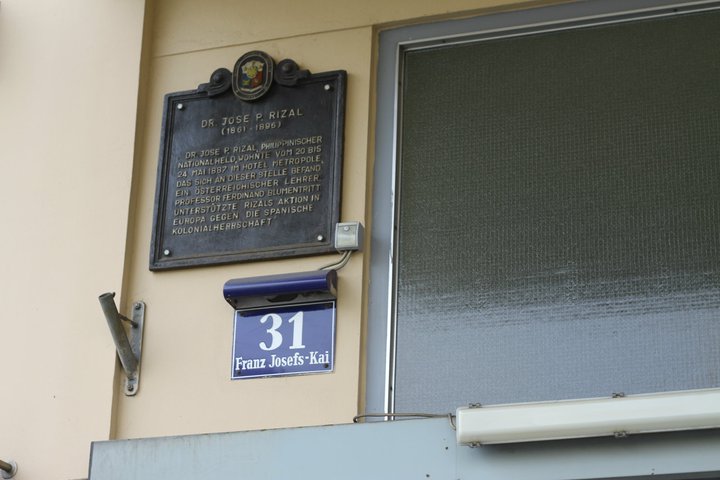
Dr. José P. Rizal, the Philippine national hero, explored Vienna on May 20-25, 1887 (corrected to May 25, as a postcard sent to Ferdinand Blumentritt on May 26, 1887 stated they left Vienna the previous day). He was accompanied by his friend Dr. Maximo Viola. They arrived from Brunn, which I assume is today’s Brno, the former capital city of Moravia and the political and cultural hub of the South Moravian Region at the time. In Vienna, Rizal and Viola visited various places of cultural and historical significance. During their stay, Rizal and Viola visited museums, statues, and other historic buildings – references to have been scarce as we try to find them in his letters to his companions and acquaintances during that time. (We’d be glad if anyone has info.)
Of special importance to Dr. Rizal was his visit to the Museum of Natural History (Naturhistorisches Museum, established between 1872 and 1889), because he was trying to look for objects or specimens from the Philippines which might be on exhibit in the museum. Rizal, being a polymath and a keen observer, likely took advantage of his time in Vienna to immerse himself in the city’s intellectual and artistic atmosphere, further enriching his knowledge and experiences.
They stayed at Metropole Hotel, which was located at Morzinplatz. The original structure has been destroyed during the war, and nowadays there stands a residential building, the Leopold Hof, at Franz-Josefs Kai 31 at the corner of Morzinplatz – a walkable distance from the building that housed the Philippine Embassy before it moved to its present location at Ares Tower.
Update January 2024 : Letter of Dr. Jose Rizal to Austrian journalist Johannes Nordmann presented in a lecture
—
Table of Contents
Lecture : Reliving Rizal (unveiling a letter penned by Dr. Jose Rizal to Austrian journalist Johannes Nordmann, dated June 1887)
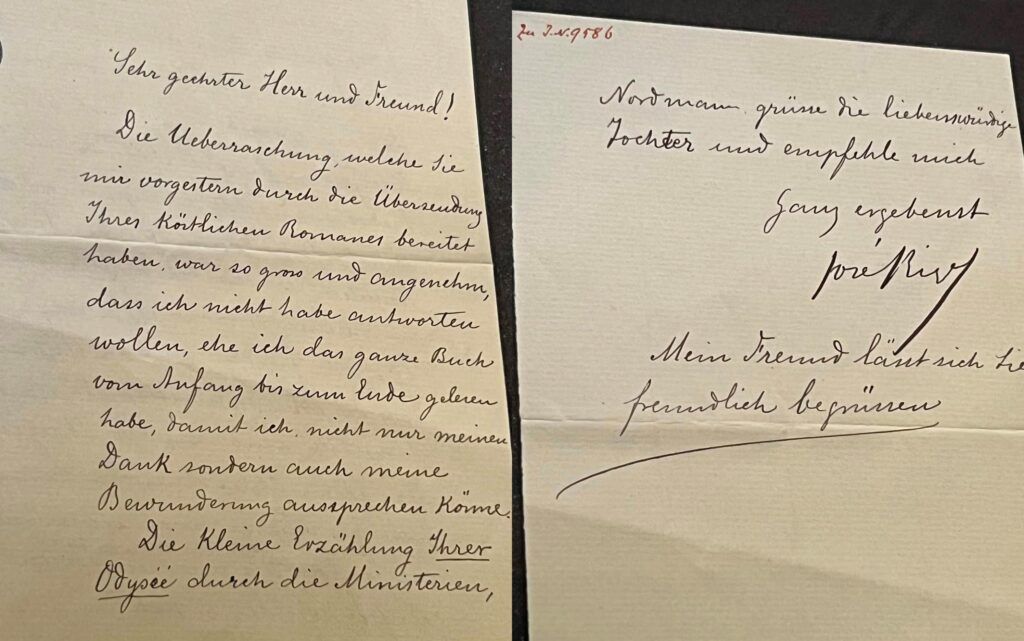
January 24, 2025 – A remarkable piece of Philippine history was unveiled at the Vienna City Library: a letter penned by Dr. José Rizal, the Philippines’ national hero, to Austrian journalist Johannes Nordmann. Discovered by Dr. Johann Stockinger, founding president of the Austro-Philippine Society, in September 2023, the letter stands as a testament to Rizal’s intellectual influence and his connections beyond Philippine shores.
 This historic 6-page letter, written in 1887, had remained tucked away in the archives for years and could shed new light on Rizal’s European travels—an area of intrigue for many enthusiasts. Mislabeled as “Kisz,” likely due to a misreading of Rizal’s signature, the letter was written in the elegant Kurrent script, Dr. Stockinger confidently identified it as Rizal’s upon spotting a reference to Noli Me Tangere within its text.
This historic 6-page letter, written in 1887, had remained tucked away in the archives for years and could shed new light on Rizal’s European travels—an area of intrigue for many enthusiasts. Mislabeled as “Kisz,” likely due to a misreading of Rizal’s signature, the letter was written in the elegant Kurrent script, Dr. Stockinger confidently identified it as Rizal’s upon spotting a reference to Noli Me Tangere within its text.
The unveiling was a momentous event, led by Philippine Ambassador to Austria Lourdes Bernas, Dr.Stockinger, and members of the Filipino community in Austria. Modern technology allowed a wider audience to participate via Zoom, further amplifying the significance of the discovery. During the presentation, Dr. Stockinger discussed the historical and cultural importance of the letter. Written in German, it provided insights into Rizal’s connection with Nordmann, renowned for works like the poem Kling leise, mein Lied. The event highlighted Rizal’s mastery of German, his enduring legacy, and his ability to foster relationships with intellectuals across the globe.
Ambassador Bernas, in her remarks, thanked and praised Dr. Stockinger for his dedication to unearthing this historical gem, which deepens the understanding of Rizal’s global influence. The event was a reminder of Rizal’s enduring legacy, not just in the Philippines but also in Europe.
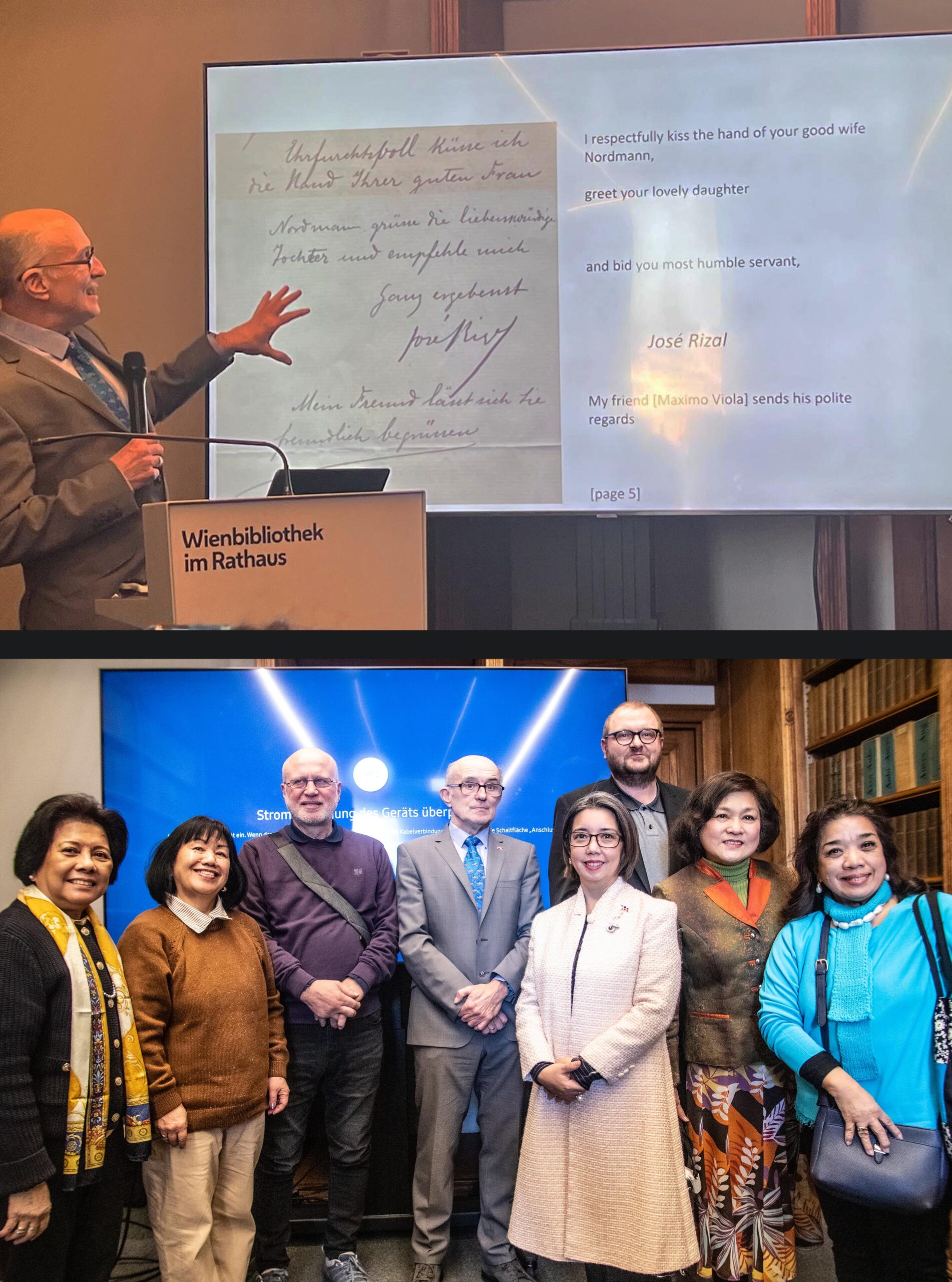
Johannes Nordmann (commonly misspelled Nordman in many sources), was an Austrian journalist and travel writer. He had been married to Josefine degli Albuzzi since 1866. The couple had two daughters, one of whom married the Indologist Karl Eugen Neumann after his death. In the field of journalism, Nordmann published a literary magazine, the weekly Salon, in 1853/54. Its failure and the continuing threat of restrictions imposed by political censorship prompted him to return to France, Württemberg and Belgium in 1858. After his return, he became editor of the daily newspaper Der Wanderer from 1862 to 1869. The Neue Freie Presse, for which he wrote from 1869 until his death, owed its reputation in the feature section not least to Nordmann’s series of articles, some of which later appeared in book form. In 1873, he founded the Neue Illustrirte Zeitung, which he edited until 1879. A member of the board of the Concordia journalists’ association from 1872 (the club Rizal mentioned in his letter to Blumentritt), he was its president from 1876 to 1879 and from 1880 to 1883. In France, he was honored with the title of Officier de L’Instruction Publique and was also an honorary member of the Association littéraire et artistique internationale.
In the correspondences between Rizal and his friend Ferdinand Blumentritt, Nordmann was mentioned several times. On May 20, 1887 while in Vienna, Rizal wrote to Blumentritt that “we will call on the gentlemen whom you recommended us” and on May 24 he wrote, “Now we consider some of the gentlemen who where with you as if they were old friends, like for example Mr. Masner and the good old man Mr. Nordmann.” Rizal also added these fond words about Nordmann : “Dr. Nordmann is a very likable old man. If I had to choose my father (that is to say, if mine had not come to this world) I would have chosen Mr. Nordmann for my father for the reason that he and my father resemble each other very much spiritually, my father being also courteous and kind and loves young people. He introduced us to his daughter and his wife and called on us today at the hotel. Afterwards, he took a walk with us; introduced me at his club and gave us theater tickets. He is an excellent man.”
On June 3, 1887 in Basel, Rizal wrote, “My very dear Friend, we arrive here today and tomorrow we leave for Geneva. I received your affectionate post card and as soon as I am in Geneva resting, I shall write Messrs. Willkomm and Nordmann. If I have not done it yet, it is because I would like to write them something more serious than a letter written during the trip.”
We now know that Rizal did write to Nordmann, the said letter dated 16th of June 1887, being the topic of this lecture.
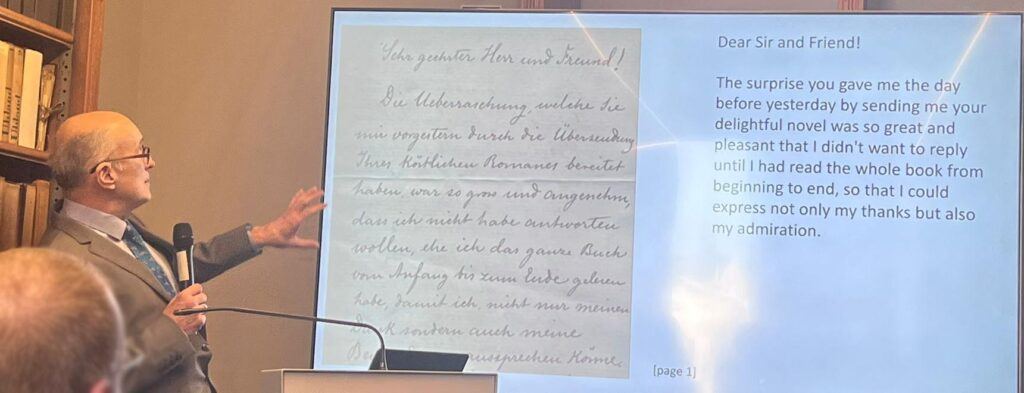
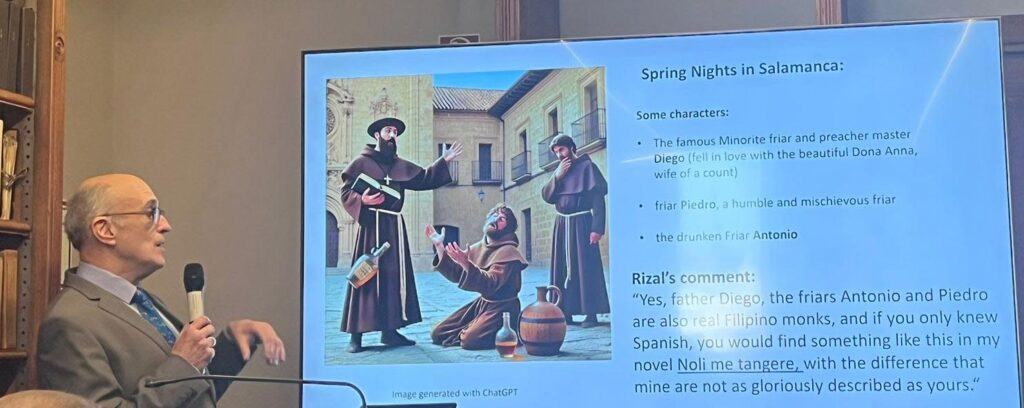
Why did it take 13 days before Rizal could pen the letter? Nordmann had given Rizal a book titled Spring Nights in Salamanca, and he had wanted to read it wholly before responding so he could express his thanks and admiration. Rizal mentioned that, “the book not only amused me, but have also given me a taste of my fatherland.” He proceeded to mention parallels to his book Noli Me tangere – particularly Filipino monks but were described in the opposite.
Further, Rizal mentioned going to Chamonix the next day (June 17, 1887), a new information for us all. He said that he would be reading the book again going there. Further into the letter he mentioned travelling to Italy, but not having enough time to explore the Land of the Arts and that he was leaving Marseille on July 3 by the steamboat Jang-tse. Records show that Rizal arrived in Marseille on July 2, 1887 where he searched the bodegas of the “Mensagerias Maritimas” for the box of merchandise. At 8 a.m. on July 3, 1887, Rizal was in the Marseille Bureau of Posts. There, he got two letters: one from Ferdinand Blumentritt and one from Manuel Hidalgo. On the same day, he boarded the boat Djemnah, a French cargo-passenger ship, and the same steamer on which he came to Europe five years prior. The steamer was en route to the Orient via the Suez Canal, Rizal saw the historic canal for the second time then. He arrived in Manila on August 5, 1887.
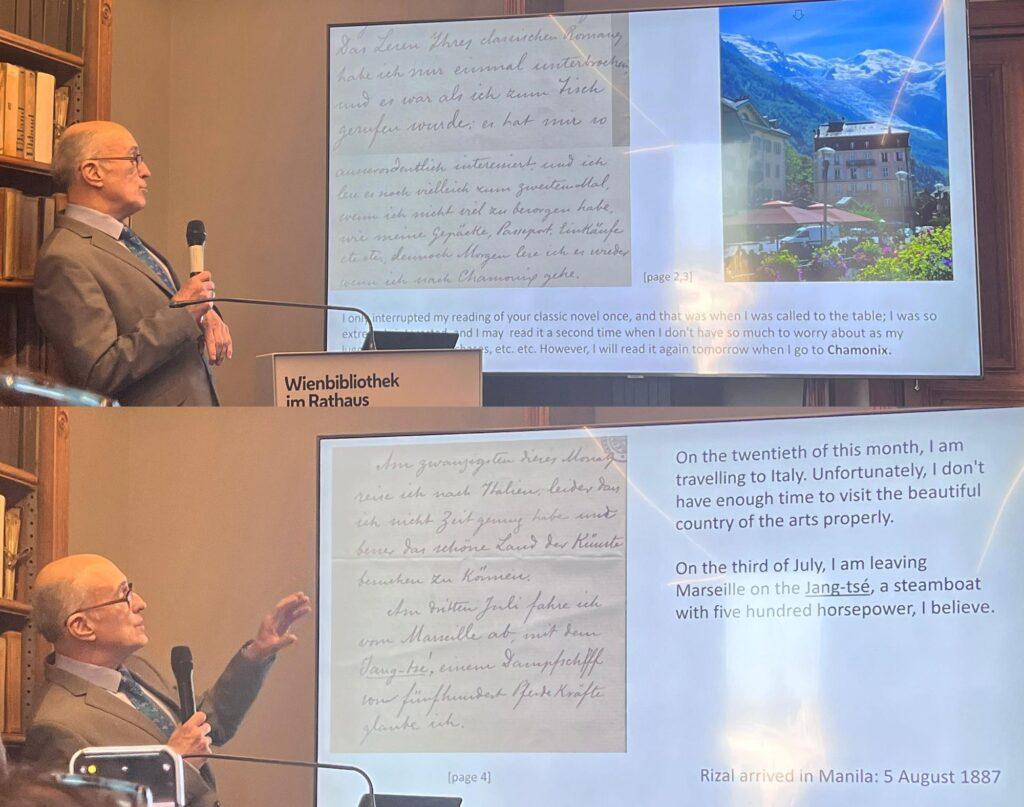
Further into the lecture, Dr.Stockinger pointed out some minor but probably significant details regarding translations of the letters between Rizal and Blumentritt. He also gave an insight to who might be the temptress in the form of a Viennese woman was, mentioned by Dr.Viola in his travel journal (scroll down to read more on it).
Nordmann died on August 20, 1887 in Vienna. Blumentritt informed Rizal of his death in a letter dated August 24 1887, which goes:
Leitmeritz, Austria
24 August 1887
My dearest Friend,
Our mutual and noble friend Johannes Nordmann is no longer among the living. He was operated on at the Wiedner Hospital in Vienna and there he died suddenly and unexpectedly.
His death caused deep sorrow in all Austria and Germany, for he was not only a writer but also an esteemed and beloved man.
With the cordial greetings of my whole family.
Yours Faithfully,
F. Blumentritt
Wiedner Hospital in Vienna was located at Vienna’s 4th district, then occupying Favoritenstraße 32, Waltergasse 5, Karolygasse 11 (non-existent to this day) from 1841 to 1956.
The discovery of the said letter will be a precedent to finding Rizal’s letters and correspondences. What if there are other mislabeled writings of Rizal archived in other European libraries – one that comes to mind would be : Are there letters he sent while at Chamonix? Here’s hoping there would be more to surface!
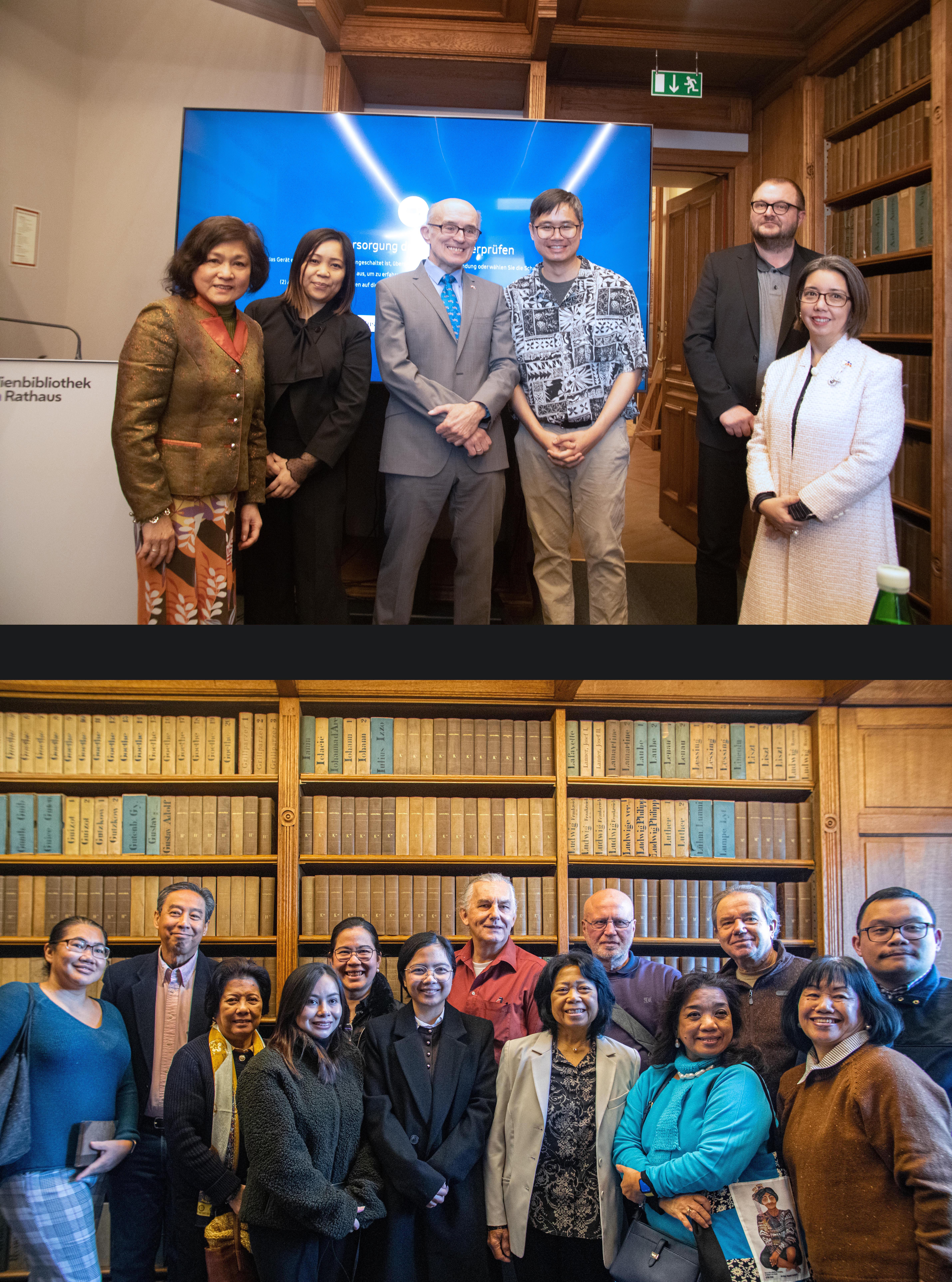
Update July 2023 : Not a lot of graffiti on the building’s wall.
 Commemorative plaque
Commemorative plaque
A commemorative plaque for Rizal has been installed at Leopold Hof on June 19, 1995 by H.E. Reynaldo Arcilla, Philippine Ambassador to Austria, on the 134th birth anniversary of Dr. José P. Rizal. So whenever we have Filipino visitors in Vienna, I would bring them to see it.
I had some years ago collaborated with a writer in Manila to trail Rizal in Vienna and while I don’t clearly remember what came of it, here’s a short gist of that article, which are compiled mostly from the publications about Rizal and excerpts from his and his friends’ letters. The photos here are the ones I took of friends and some of theirs.
The plaque reads:
“DR. JOSE P. RIZAL, PHILIPPINISCHER NATIONAL HELD, WOHNTE VOM 20. BIS 24. MAI 1887 IM HOTEL METROPOLE DAS SICH AN DIESER STELLE BEFAND. EIN ÖSTERREICHISCHER LEHRER,PROFESSOR FERDINAND BLUMENTRITT UNTERSTÜTZTE RIZALS AKTION IN EUROPA GEGEN DIE SPANISCHE KOLONIALHERRSCHAFT.”
Translation:
“DR. JOSE P. RIZAL, FILIPINO NATIONAL HERO, RESIDED FROM THE MAY 20 to 24, 1887 IN THE HOTEL METROPOLE WHICH WAS IN THIS PLACE. AN AUSTRIAN TEACHER, PROFESSOR FERDINAND BLUMENTRITT SUPPORTED RIZAL’S ACTION IN EUROPE AGAINST SPANISH COLONIAL RULE.”
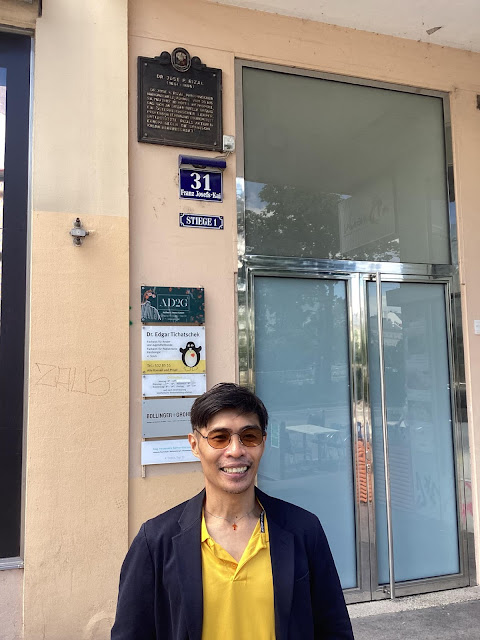
Dr. Maximo Viola
Maximo Viola was a Filipino doctor, writer, and patriot who played a significant role in the life of José Rizal. Viola was a close friend and supporter, and he helped finance the publication of Rizal’s novel, “Noli Me Tangere” (Touch Me Not), which is considered as one of the most important works of Philippine literature. Because of the limitations in the Philippines at the time that prevented his brother, Paciano, from sending money to Jose Rizal in Europe, Viola lend Rizal the money he needed. He also accompanied Rizal around Europe and was there with him when “Noli Me Tangere” was printed in Berlin. He also supported Rizal’s efforts to promote reforms in the Philippines.
Jose Rizal and Maximo Viola met one of the best novelists of that time, Norfenfals (to which I couldn’t find other references to). They also got to know two of Blumentritt’s close friends, the Austrian professors Masner and Nordman (to date, still looking for references and letters exchanged).
Ferdinand Blumentritt
Jose Rizal’s friendship with Austrian scholar Ferdinand Blumentritt was deep and intellectual. Ferdinand Blumentritt, an Austrian scholar and ethnologist, became one of Rizal’s closest friends and correspondents during Rizal’s travels in Europe. Their friendship was based on mutual respect, shared intellectual interests, and a commitment to social justice and reform.
Blumentritt greatly admired Rizal’s intellect, writings, and dedication to the cause of Filipino nationalism and social reform. He provided valuable support to Rizal, offering encouragement, advice, and scholarly insights. Blumentritt’s expertise in history, ethnology, and languages contributed to Rizal’s understanding of European culture and colonialism, which in turn influenced Rizal’s own advocacy for Philippine independence.
Their friendship was sustained through frequent correspondence, with Rizal often seeking Blumentritt’s advice on various matters, including historical research and political strategies. Blumentritt, in turn, actively promoted Rizal’s writings and ideas in Europe, helping to garner support for the Philippine nationalist cause among European intellectuals.

They first met on May 13, 1887 at the Leitmeritz (a town in the Ústí nad Labem Region of the Czech Republic) railroad station. At the station, Professor Blumentritt was holding a pencil drawing of Rizal that he had sent to help identify him.
Despite the distance between them, Rizal and Blumentritt remained close friends until Rizal’s death in 1896. He advised Rizal not to publish the second book, El Filibusterismo, in fear of his friend’s life. Prior to his death in Manila, Rizal penned his farewell letter to Blumentritt. It was said that Blumentritt sobbed after reading the letter.
Blumentritt continued to honor Rizal’s memory and legacy, preserving their correspondence and advocating for the recognition of Rizal’s contributions to Philippine history and culture. Their friendship serves as a testament to the power of intellectual exchange, solidarity, and shared ideals in the pursuit of social justice and national liberation. During his lifetime, Ferdinand Blumentritt was one of the best experts on the Philippines, even though he never set foot there. The Philippines honored him with parks, a street, and a light rail station in Manila named after him.
On May 24, Rizal and Viola rode a river boat to see beautiful sights of the Danube River.
Yes, we have Dr. Maximo Viola to thank for helping publish Noli (I’m speaking for those who has loved to dissect the parallels of history and real-life situation and the symbolism of the lives Filipinos lived at the time written in the book).
Which of the two books do you prefer? For me, the way the characters were developed were very different, so I enjoyed reading Noli more, but loved Fili better. ^_^
Trivia:
Rizal had written two letters to Blumentritt, one dated May 20, 1887 and the other dated May 24, 1887, with address from the Hotel Metropole.
Dr. Viola noted in his travel journal that Rizal had encountered an extremely lovely Viennese girl who quickly won Rizal over. His words read, ‘’In one of our tours of that city, he (Rizal) encountered the figure of a temptress in the form of a Viennese woman, of the family of the Camellias or Margarite, of extraordinary beauty and irresistible attraction, who seemingly had been expressly invited to offer for a moment the cup of mundane pleasure to the apostle of Philippine freedom who until then had enjoyed among his intimates the fame worthy of his glorious namesake St. Joseph.’’



Bust
A bust of Dr. Jose Rizal was installed at Laurenzerberg 2, also the site of the Philippine Embassy, it was unveiled on March 9, 2001 by H.E. Victor Garcia III, Philippine Ambassador to Austria, in the presence of a large gathering of members of various Filipino-Austrian organizations in Vienna. The Rizal bust was donated by two major agencies of the Philippine Government, the Government Service Insurance System (GSIS) and the Social Security System (SSS).
Update : The Embassy has moved to Vienna’s 22nd district and we’re yet to see if the bust remained or if it was brought along to the new offices.
Update 2023 : Yes, Rizal’s bust is displayed at the the Philippine embassy’s public hall.
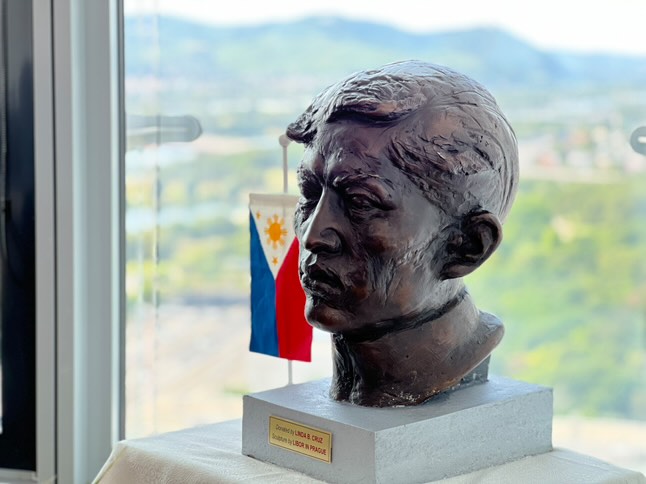
Morzinplatz
While in the area, one can easily go around Morzinplatz. Morzinplatz is a historic square with several points of interest and activities nearby:
Schottenkirche (Scottish Church): This medieval church is just a short walk from Morzinplatz. It’s known for its stunning Gothic architecture and rich history, dating back to the 12th century. Visitors can admire its beautiful interior and attend services or concerts.
Schottenstift (Scottish Abbey): Adjacent to the Schottenkirche is the Schottenstift, a Benedictine monastery founded in the 12th century. The monastery complex includes a church, cloisters, and a museum. It offers guided tours, allowing visitors to explore its fascinating history and architecture.
Vienna’s Historic Center: Morzinplatz is situated near Vienna’s historic city center, making it a convenient starting point for exploring the city’s many attractions. Visitors can stroll through the picturesque streets, visit famous landmarks like St. Stephen’s Cathedral, and enjoy shopping, dining, and cultural experiences.
Danube Canal: Morzinplatz is close to the Danube Canal, a scenic waterway lined with bars, restaurants, and recreational spaces. Visitors can take leisurely walks along the canal, enjoy boat tours, or relax at one of the waterfront cafes.

Jewish Museum Vienna: Just a short distance from Morzinplatz is the Jewish Museum Vienna, which showcases the rich history and culture of Vienna’s Jewish community. The museum features permanent and temporary exhibitions, educational programs, and special events.
Vienna Ringtrasse (Circular Avenue): Morzinplatz is located near the Vienna Ring Road (Ringstraße), a famous boulevard encircling the historic center of Vienna. Visitors can take a leisurely stroll or a guided tour along the Ring Road to admire iconic landmarks such as the Vienna State Opera, Hofburg Palace, and Parliament Building.
How to get to Morzinplatz

To get to Morzinplatz and eventually to the marker/plaque, you can use various modes of transportation depending on your starting point:
Public Transport: Morzinplatz is conveniently located near several trains, tram and bus stops.
Trams : Several tram lines pass near Morzinplatz. Tram lines 1 and 2, which run along the Ring Road (Ringstraße), are particularly convenient for accessing Morzinplatz. You can get off at the Schottentor or Schottenring tram stop and walk a short distance to Morzinplatz.
U-Bahn (Subway): The closest subway station to Morzinplatz is Schottenring, which is served by the U2 and U4 lines. From the Schottenring station, you can walk to Morzinplatz in just a few minutes. Schwedenplatz, served by U1 and U4 is also nearby.

--------------------------Book your Vienna stay here!--------------------------
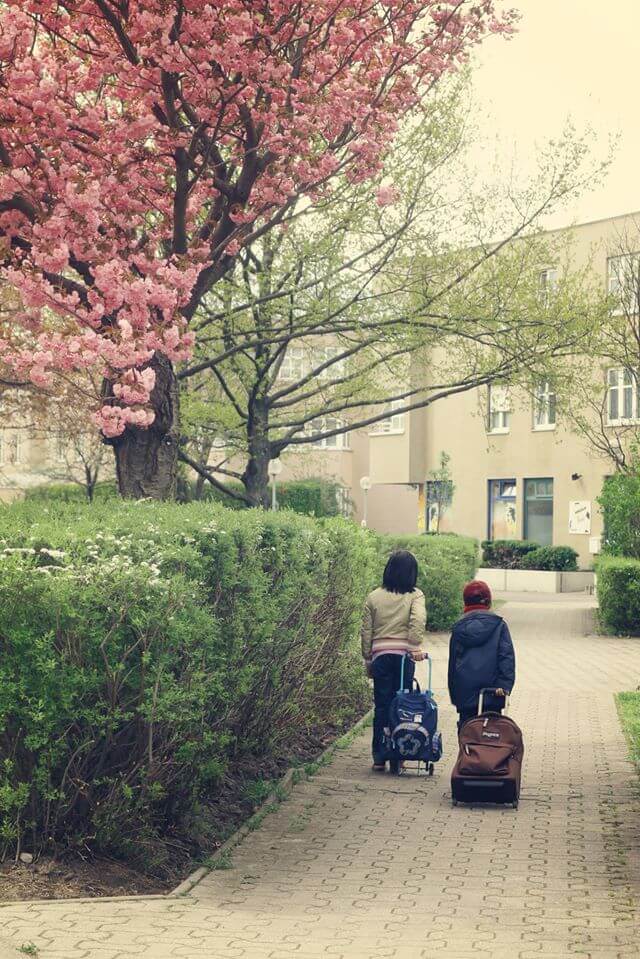

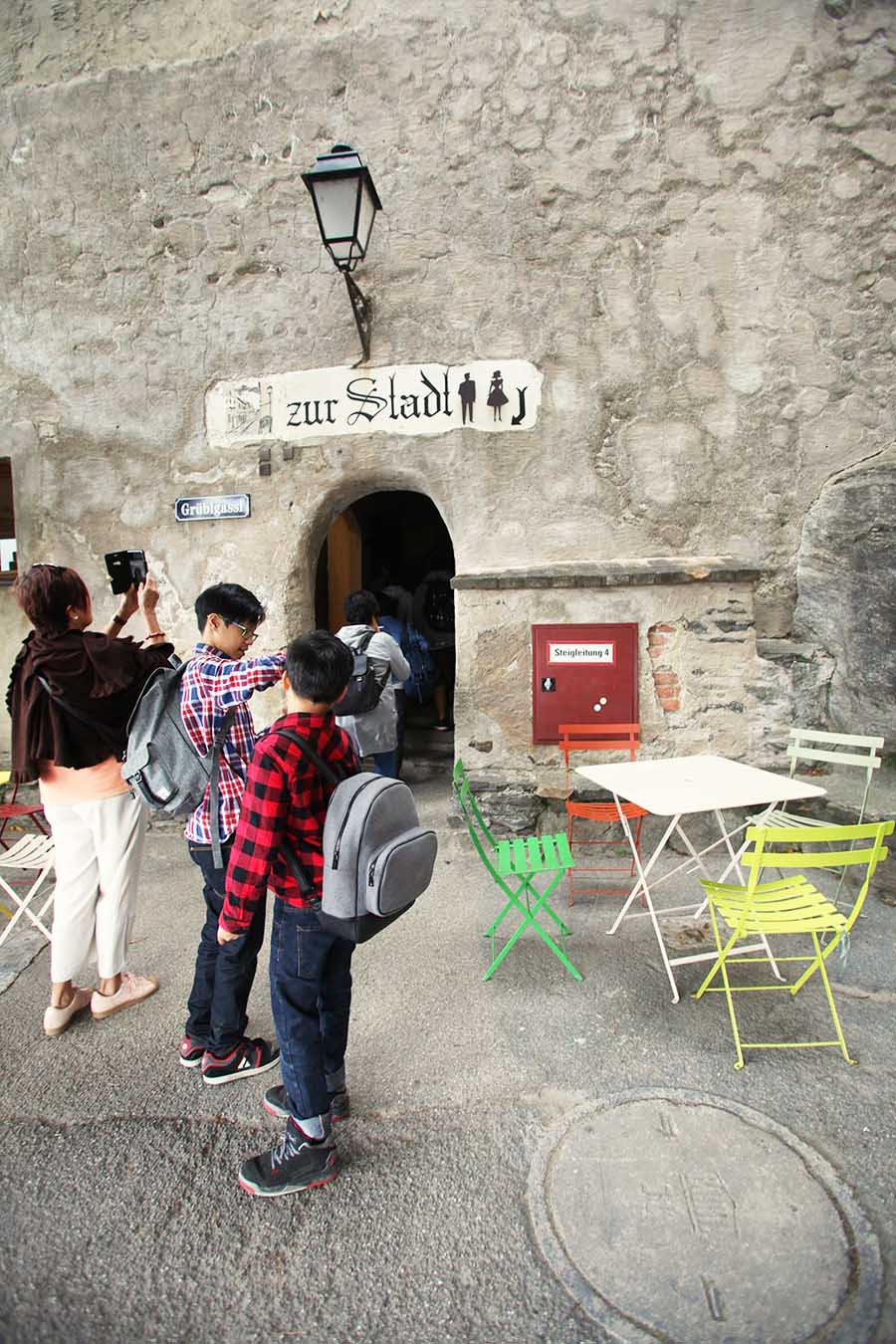


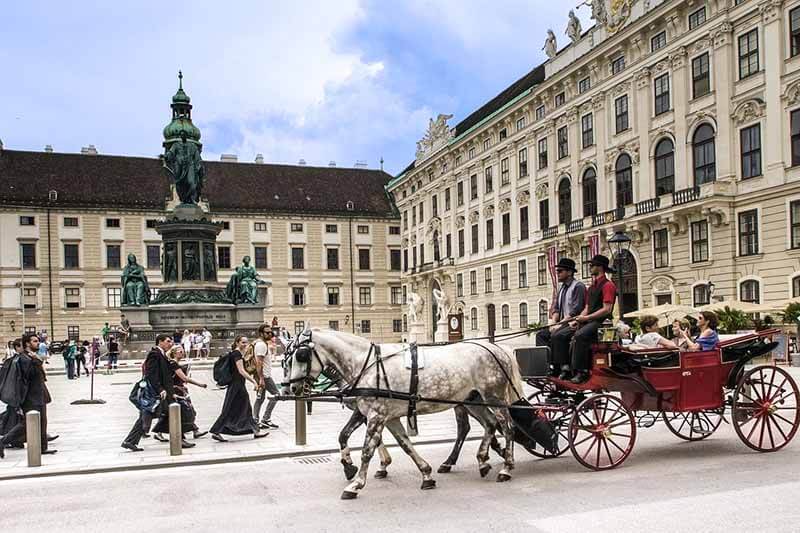





This is very interesting to know! Who initiated the installation of the plaque? I enjoyed both of the books, and they really gave us a good look at the lives of our fellowmen back in those days…
The Philippine embassy in Vienna, sorry forgot to add that. 🙂
I would love to see the marker when I visit someday. ^_^ Thanks for sharing these photos.
We also “dissected” the books during our subjects in Philippine history, or was it Filipino! Ang galing ng pagkakasulat.
Yes, let me know if you’re coming by for a visit…
Right? A real novelist that could twist something of a love story into historical lessons we of the future generations would learn from!
I should read the travel journal soon! This makes me want to reread Noli and Fili too!
This is so freaking amazing! I can’t even believe this exists. I can’t wait to read such beautiful artistic literature.
Great read and a well deserve plaque for Dr. Rizal. How amazing to see those letters.
This sounds like it was so much fun to see first-hand! I didn’t realize that Filipino history stretched all the way into Vienna.
This was such an interesting read! I never knew that there was so much history in Austria; and to think it connects to Jose Rizal in the Philippines, too!
Fascinating read! I never knew Dr. Jose Rizal stayed at Hotel Metropole. The connection between Vienna and Philippine history is truly intriguing—thanks for sharing this gem! – knycx journeying
I love seeing old stuff like handwritten letters and postcards. My husband saved about 30 handwritten papers from his grandparents. I really appreciated all the history museums, too, and I enjoyed reading the story about Dr. Rizal.
I’ve always wanted to visit here! Vienna has so much history and you’ve inspired me so much with your post! Saving this pin!
Very nice write-up.
May I help you to clarify some things? F. e. these;
„Jose Rizal and Maximo Viola met one of the best novelists of that time, Norfenfals (to which I couldn’t find other references to). They also got to knw two of Blumentritt’s close friends, the Austrian professors Masner and Nordmann (to date, still looking for references and letters exchanged).“
In Rizal literature, there are numerous references to a ‘novelist Nordenfels,’ but this can only refer to Johann Nordmann. The error can already be found in Austin Craig’s 1913 biography of Rizal: ‘With a letter of introduction to a friend of Doctor Blumentritt in Vienna, Nordenfels, the greatest Austrian novelists, Doctor Viola and Doctor Rizal went on to the capital, where they were entertained by the Concordia Club.’ (p. 133)
However, Nordmann was not a good novelist; Rizal was better. But Nordmann was the pioneer of tourism journalism.